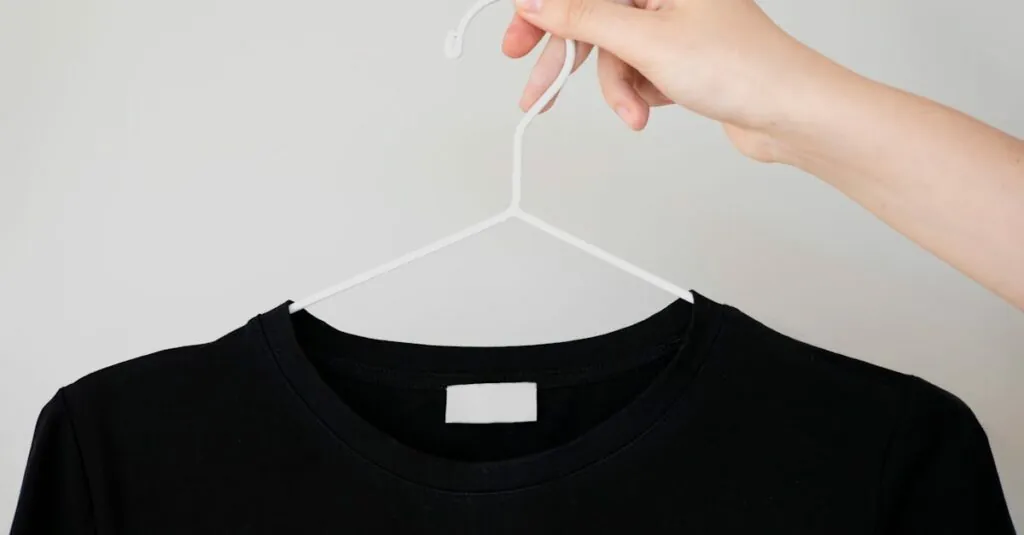Table of Contents
ToggleIn a world where first impressions matter more than ever, product design trends are shaping the way consumers interact with brands. From sleek aesthetics to user-friendly interfaces, it’s not just about making things pretty; it’s about creating experiences that stick. So, what’s hot in the design world right now?
Overview of Product Design Trends
Product design trends continually evolve, reflecting technological advancements and changing consumer preferences. One prominent trend is minimalism, characterized by clean lines and simple forms. Companies like Apple embrace this approach, allowing products to communicate elegance and functionality.
Sustainability plays a significant role in current designs. Many brands focus on eco-friendly materials and processes to reduce their environmental impact. For example, furniture manufacturers increasingly use reclaimed wood and recycled plastics in their products.
Customization has gained traction in recent years. Design processes now allow consumers to personalize products according to their tastes and needs. Brands such as Nike offer online platforms where customers create unique shoe designs, enhancing user engagement.
Incorporating technology into product design remains crucial. Smart devices with integrated technologies, such as IoT functionality, enhance user experiences. Take the example of smart home devices that adapt to individual user preferences, providing convenience and efficiency.
Bold colors and textures attract attention, marking a shift from traditional neutral palettes. Many brands now experiment with vibrant hues to stand out in the market. Products featuring striking color combinations can create memorable brand identities.
User experience design focuses on functionality and ease of use. Prioritizing ergonomics and intuitive interfaces leads to products that increase customer satisfaction. Streamlining navigation and interaction fosters deeper connections between users and brands.
These trends shape the future of product design, directing how brands engage consumers. By understanding these influences, businesses can craft compelling products that resonate with their target audience.
Key Trends Shaping the Future
Product design trends significantly influence how consumers interact with brands. These evolving trends foster memorable experiences and drive engagement.
Minimalism and Simplicity
Minimalism prioritizes clean lines and simple forms. Brands like Apple successfully illustrate this approach, creating aesthetic appeal through straightforward designs. Clear functionality enhances user experiences, allowing seamless interactions. Consumers often favor products that are easy to navigate and visually pleasing. Simple designs encourage a focus on essential features and facilitate brand recognition. Less clutter often leads to greater emotional responses from users. Therefore, minimalism remains a vital aspect of modern product design.
Sustainability in Design
Sustainability has become crucial in product design. Brands increasingly prioritize eco-friendly materials, such as reclaimed wood and recycled plastics. This approach reduces environmental impact and attracts environmentally-conscious consumers. Regulatory pressures and consumer preferences push companies to adopt sustainable practices. Brands that embrace this trend often strengthen their market position and loyalty among customers. Carbon-neutral initiatives and biodegradable options reflect a commitment to sustainability. Innovations in material sourcing continue to shape the future of responsible design.
Personalization and Customization
Personalization empowers consumers to connect with products. Many brands, like Nike, offer platforms for unique shoe designs, catering to individual preferences. This trend enhances user engagement through tailored experiences. Customization allows customers to express their unique identities and preferences. Brands that implement customization often see increased customer satisfaction and loyalty. User-driven designs create emotional connections, leading to repeat purchases. As this trend evolves, it shapes the purchase behavior of modern consumers.
Innovative Materials and Techniques
Innovative materials and techniques play a pivotal role in defining contemporary product design trends. Utilizing advanced solutions elevates the aesthetic and functional quality of products.
Eco-Friendly Materials
Sustainable innovation increasingly focuses on eco-friendly materials. Companies now incorporate reclaimed wood, bamboo, and recycled plastics to minimize environmental impact. The shift towards biodegradable alternatives signifies a growing commitment to sustainability in design. Brands that adopt these materials resonate with environmentally-conscious consumers. By prioritizing sustainability, they can enhance their market position and build stronger relationships with customers.
3D Printing in Product Design
3D printing revolutionizes product design processes. This technology streamlines prototyping, enabling rapid iterations that save time and resources. Designers can easily customize products, tailoring them to specific consumer needs. The ability to create complex shapes and lightweight structures introduces new possibilities for creativity. As costs decrease, 3D printing becomes more accessible to small businesses, fostering innovation across various industries.
The Impact of Technology
Technology significantly reshapes product design trends. It drives innovation, enhances user experiences, and streamlines production methods.
Integration of AI and Automation
Integration of AI improves design processes and personalizes user experiences. Brands leverage machine learning algorithms to analyze consumer preferences and create tailored products. Automation also optimizes production lines, reducing time and cost. Designers streamline repetitive tasks with AI tools, allowing them to focus on creativity. For instance, fashion brands use AI to predict trends and optimize inventory management. Enhanced analytics empower companies to make data-driven design decisions. Consequently, these advancements boost efficiency and consumer satisfaction.
Virtual and Augmented Reality in Prototyping
Virtual and augmented reality revolutionize prototyping in product design. Designers visualize and manipulate 3D models using these technologies, leading to more effective collaboration. These immersive environments enable quick adjustments, reducing time spent on iterations. During the design phase, teams can present realistic prototypes to stakeholders, gathering feedback instantaneously. Companies like IKEA embrace augmented reality, allowing consumers to visualize furniture in their own spaces. Thus, this trend increases consumer engagement and accelerates the time-to-market for new products.
User-Centric Design Approaches
User-centric design approaches emphasize the significance of understanding user needs in the product design process. Effective user research is essential to create products that resonate with audiences.
Importance of User Research
User research plays a vital role in shaping product development. Gathering insights through surveys, interviews, and usability testing helps identify pain points and preferences. Companies that invest in understanding their target market often create solutions that align with actual user expectations. Furthermore, user feedback informs iterative design, ensuring continuous improvement and relevance. Research-driven design minimizes risks and enhances satisfaction, fostering loyalty and repeat business.
Designing for Accessibility
Designing for accessibility ensures that products remain usable for all individuals, including those with disabilities. Incorporating features like screen readers and alternative navigation options boosts user experience for a wider audience. Brands that focus on accessibility not only comply with legal standards but also demonstrate inclusivity and social responsibility. Providing multiple interaction methods, such as voice control or tactile feedback, caters to diverse user needs. Embracing accessibility contributes to a more positive brand image and expands market reach.
As product design continues to evolve it’s clear that staying ahead of trends is essential for brands aiming to connect with consumers. The fusion of aesthetics with functionality not only enhances user experiences but also fosters brand loyalty.
Embracing sustainability and customization reflects a growing awareness of consumer values while integrating technology enhances engagement and innovation.
With a focus on user-centric design and accessibility brands can create products that resonate deeply with diverse audiences. These trends are shaping the future of product design and will undoubtedly influence how businesses interact with their customers in meaningful ways.




